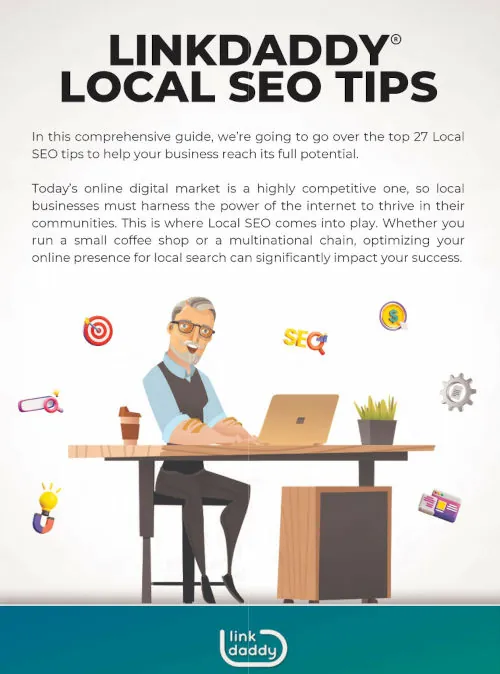
Using an SEO Project Checklist is a good idea. SEO is one area where to get consistently good search engine rankings you need to work to a system. This document will help you keep track of all the essential tasks to optimize your website for search engines and implement an effective SEO strategy. It can also help you stay on top of your progress and provide a common language for your team among departments and senior executives.
By following the steps on the checklist, you can ensure that your site is up and running and that you’re avoiding common pitfalls. Here are some tips for optimizing your website for search engines:
Create a list of all the tasks that must be completed before launching your website. This list should include the tasks you’ll need to do before you can launch your website. Creating a comprehensive SEO checklist is especially important if you’re just starting out. It will ensure that your site gets the right amount of organic traffic. There are numerous factors to consider before launching your site, and it’s critical to follow these steps to achieve the best results.
Create an SEO Checklist
Creating an SEO Checklist is a great way to stay on top of your website’s rankings. There are a variety of factors that you’ll want to consider, including your target audience, target keyword, search engine spiders, search volumes, outbound links, duplicate content issues, and your site’s goals. That’s only a small percentage of everything that you need to keep an eye on.
The goal of an SEO project is to get your site to appear on Google’s first page at least for each primary keyword, so your website should be focused on that. Using an SEO Project Checklist is an excellent way to make sure you’re doing everything right. If you’re a doer, using the checklist is a great idea.
Website Audit

A Website audit is a process by which a webmaster identifies and fixes website issues such as; crawl errors, structured data markup, or poor user experience.
The process is simple and free. The SEO tool that you use should include a free trial and allow you to enter your website URL and the tool will crawl your site and generate a report of any problems found. The results of the audit can be displayed in different ways depending on the type of tool you use. The most important factor to consider is the overall health of your website for mobile users as well as users on other devices.
A website audit is essential if you want to keep users and get more business. It can show you if your content is lacking and which pages need to be updated. A good website audit will identify which pages are ranking and which ones need updating. Each page of your site should be categorized and should serve a purpose. It will check your link profile identifying inbound links that you may want to disavow.
The more complicated a site is, the more visitors will abandon it. A website audit will reveal any problems and make recommendations for improving search engine traffic.
A website audit should also include the design of your site. This is a crucial part of the process, as it will be able to see what the visitors of your website are looking for. The design and layout of your site should be user-friendly and correspond to their needs.
SEO-friendly URLs and mobile usability can be affected by the design of your website, which will vary, so it’s important to make sure that it’s easy to navigate. A well-designed and functional website will help your conversion rates.
Keyword Research
In order to optimize your website for organic search, you need to understand the goals of your website. You need to target specific keywords to improve your ranking on the SERPs. Using a keyword research tool is SEO Basics, and can help you choose the right words to include on your site. It will also help you narrow down your list of keywords, and show their difficulty score (how hard they will be to rank for). You can use the data collected by your tool to improve your content strategy to improve the chance of showing for search snippets as well as the main organic ranking. Once you know your goals, you can begin writing your content.

The first step in keyword research is to come up with a topic or idea that you want to write about. You can get your seed keyword from industry knowledge, forums, products, or services. You can take note of the keywords you choose, and continue the research by using Google Search Console, Bing Webmaster Tools, or by visiting websites with relevant content. Make sure your content is relevant and helpful as well as include SEO keywords from your keyword list. You will also end up with more variations of the keywords you use. You’ll have an idea of what to include in your content.
The second step in keyword research is to understand your niche. You’ll need to know what topics are most popular in your niche, and what themes come up frequently. For example, if you’re a hiking blog, you’ll probably want to rank “hiking” on Google. This will help your readers find your content and make it more attractive to them. Ideally, you’ll be able to target long-tail keywords, which can represent a significant percentage of your organic traffic.
Including Keyword Research in your complete SEO checklist is essential and some would argue that everything should start here.
Competitor Research
There are many tools available on the market to help you conduct competitive research. A few of these include Google Alerts and competitor profiles. By tracking specific keywords and phrases in search engines, you can gain valuable insights into your target market. These tools also provide you with insights into your competitors’ businesses. You can use this data to improve your own business strategy. You can use them for competitive analysis, or you can use them for product development. Regardless of which method you choose, it will be useful to conduct competitor research.
The goal of competitor research is to better understand your rivals. By doing so, you can take advantage of their weak points. You can also find out what marketing tactics they are using to generate leads, which can divert theirs. Moreover, you can use your research to identify trends in the market, which will help you develop your own strategies. Finally, you can use the information to enhance your own products and services. Performing competitor research can make your business more successful.
Understand Your Competitors
While spying or being nosy might seem tempting, competitor research is a strategic tactic that leads to actionable insight. Do they use Off-Page SEO or Google My Business? How is the load speed of their site, does the site follow compliance with search engine guidelines?
Unlike spying or stalking on social media, competitor research follows a specific structure. By using competitor analysis tools, you will be able to learn which channels work for your competitors. In addition, this type of research will save you time and money. Further, you will be able to identify which channels and marketing messages will resonate with your target audience.
Having an idea of how your competitors use social network pages, Mobile SEO, or Google Maps, will help you get a better picture of what Google is looking for to rank them.
SEO Siloing

SEO siloing is a structure for a website that helps both the audience and search engines understand the content. When done correctly, siloing can help a new website get the search engine attention it needs immediately. Similar to a farmer’s system of organizing oats and grain, SEO silos can save you time by helping search engines recognize the overall theme of the site, allowing them to match the correct keywords to the relevant content.
The first step in SEO siloing is establishing a website hierarchy and identifying key terms. The organization of content will allow search engines to identify and reward pages that contain relevant content for a given keyword. The website should also have plenty of supporting body content, which can be used to support the keywords and should be structured within a basic content strategy. It’s important to remember that search engines will evaluate a site based on the E-A-T aspect, which stands for Expertise, Authority, and Trustworthiness.
The second step in SEO siloing is establishing a virtual silo structure with crawlable navigation links keeping everything together. A category page should link to at least five supporting pages.
Once the website is up and running, it’s time to monitor how your siloed pages are performing in search engine optimization. It’s important to note that the content of each category should be consistent and relevant, so visitors can find it easily making user journeys less stressful. The third step is to measure the performance of the pillar content. If it’s getting high page rankings, the site can be considered a success.
SEO Tools & Their Setup
Setting up a data analysis environment is an important step in analyzing a large dataset. It is often difficult to visualize large amounts of data, but with the right tools, you can view the raw data in treemaps and identify anomalies. Tools such as Ahrefs Webmaster Tools will help you monitor crawl issues, site loading speed, and other external factors.
You can also extract valuable knowledge from the raw data without any programming knowledge. Several non-programming tools are as good as Python or R for data analysis.
Knowing that your site follows search engine guidelines and being able to see the Optimization score for a page are helpful in your fight to understand the search engine ranking algorithm and how it affects how well you rank. You want to know if something is having a negative impact, especially after algorithm updates.

Some tools such as Google’s mobile-friendly test tool have a specific use where some will return data that can be analyzed to cover a list of SEO uses.
Schema markup is now an integral part of any technical SEO checklist. If you can help search engine crawlers understand what your website is about, clearly telling them the keyword ideas that your page is built around, then you should be using that.
The first step is to install an analysis tool. The best choice is to install the Analysis Toolpak. It comes with Excel, Microsoft Office, and Mac. You can find it by browsing. Once you’ve installed the add-in, you’ll see a menu option for Data Analysis. Once you’ve set it up, you’ll be ready to start analyzing data. After installing the Toolpak, make sure that you have access to an internet connection and have an Excel file available.
Once you’ve installed the add-in, you’re ready to run the analysis. Many BI tools can automate data cleaning and modeling tasks. Then, you’ll use the results to influence decisions. With an all-in-one tool, you’ll be able to automate the data analysis process. The software will simplify the tedious work of data cleaning and modeling by presenting the results in chart formats and letting you save time on a large-scale task.
Search Engine Optimized Content Creation
Content creation should be a platform for brand communication, not just a way to sell a product. Rather, it should tell a story, using the power of persuasion to motivate readers to take action. If you haven’t written in this fashion yet, get familiar with the storytelling framework. First, figure out what you’ll write about. Next, eliminate topics that don’t represent your brand. After that, create an outline of topics you want to cover. Planning your content covers a prime SEO factor and can be reinforced by the careful use of content networks.
When planning a content strategy, it’s important to keep an eye on the big picture. The process of content creation begins before the first frame of a video, the first sentence of a blog post, or the first episode of a podcast. You need a framework to guide you throughout the process. The content strategy framework is an essential piece of the puzzle because it helps you determine your goals and your audience. It’s critical to develop a plan to implement the strategy and track your progress.
Once you have a clear picture of your content strategy, it’s time to start creating. There are three major steps to consider: developing a solid process, identifying goals, and establishing measurable goals. The next step is defining your content strategy. You can create a template that will make it easy to follow and refer back to later. In addition, you can create a checklist for the various elements that comprise a piece of content.
Remember to identify the prime goal of a piece of content. Should it encourage clicks by users or establish the authority of the business type? Should it be written in the active voice, would a table of contents help? A good Content Marketing strategy will identify answers to all these questions.
Search Engine Optimization
Search engine optimization (SEO) is a method of getting your website listed on top of the search results. It helps you generate more relevant traffic, which can lead to increased sales. According to Google, there are billions of searches conducted each day, and these searches have a commercial intent. With the right SEO techniques, you can get your website ranked higher than your competitors.
SEO covers so many aspects now; mobile search performance, digging out bad links, making the best use of your website’s crawl budget, or Google Tag. Any SEO program now needs to be well organized. It will cover on-page SEO, off-page SEO, and checking your Business listing in local directories. You will need to understand how lines of code or unlinked brand mentions can affect your ranking. You will need to be up to fate with what’s happening, from knowing what Matt Cutts or Brian Dean is thinking to the best Drupal SEO Checklist to use if your website is built on that framework.

Search engine optimization can also lower customer acquisition costs by increasing lifetime value. Terakeet, for instance, delivers customers to businesses for 25 cents on the dollar compared to paid channels. Moreover, SEO differs from other forms of digital marketing. For example, while most of these techniques are based on the market share of the major search engines, they often interrupt the online experience. In contrast, SEO techniques aim to create an organic and visible presence for businesses.
With the right SEO techniques, a business can be present at every stage of the customer journey. The strategy aligns with the searcher’s intention. The content should engage prospects at every stage of the marketing funnel. Those businesses that do not take advantage of SEO are missing out on a significant revenue stream. With the right SEO strategies, businesses can sell more eCommerce products, drive leads, improve their brand visibility, and even capture traffic from TV advertising.
Linking Strategy
A good Linking strategy will improve the overall value of your website. Creating new content is an excellent way to improve the rankings of older content. The key to making new content more valuable is to add fresh links to it. Adding fresh links to your website also improves the user experience. If your content is relevant and contains valuable information, it will be more likely to rank well in search results. Here are some strategies to improve the overall value of your website.
Internal Linking
The strategy of building backlinks (internal links}, within your site is to create related content based on topic clusters. These content buckets collectively cover a wide range of topics and concepts. Each topic cluster contains one pillar page and many supporting cluster pages that link out to each other. In addition to linking to other pillar pages, you should also link to other pillar pages. For example, if your product site is focused on obesity, you should seek links from sites that focus on exercise and weight loss.
Linking Strategy
If your content is focused on obesity, you should look for links from a range of related sites. If your content is centered on losing weight or exercising for health, you should look for content on all types of websites. It’s best to focus on topics that you know a lot about. You can create a cluster page for each topic. A cluster page can be an overview of a high-level topic and introduce subtopics. Then, link each cluster page back to the main pillar page.
Links are an important ranking factor so it also pays to check for broken links. If you find any, get them fixed.
Conclusion – SEO Checklist In 2022
In conclusion, SEO is still an important aspect of online marketing in 2022. While there may be new techniques and strategies that emerge, SEO will always be a critical part of driving traffic to your website. Make sure to keep up with the latest trends and stay ahead of the competition by using an SEO checklist.









